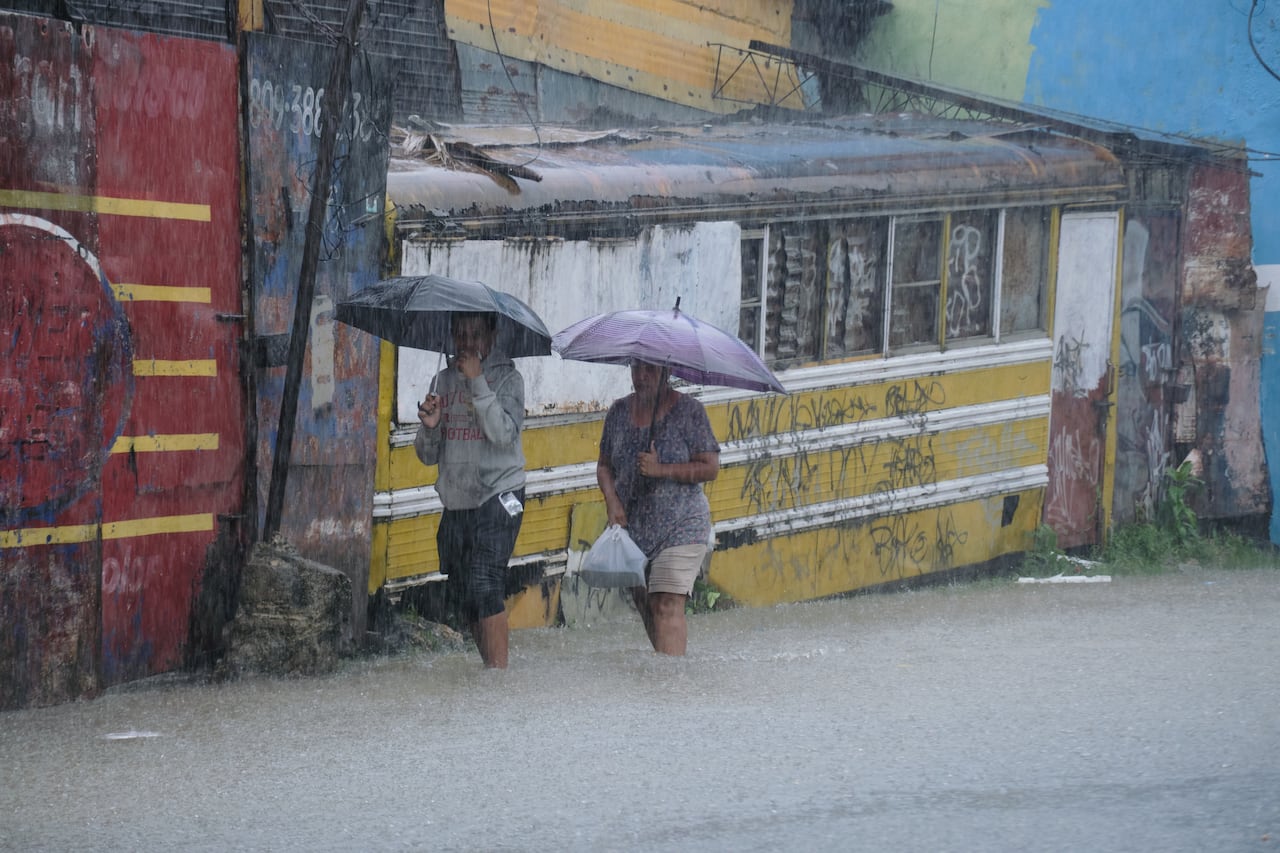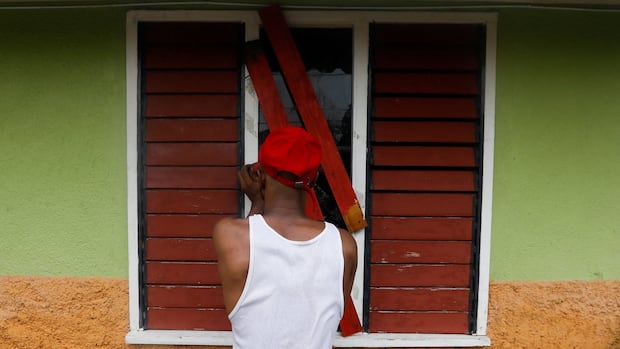Hurricane Melissa strengthened into a major Category 4 hurricane, with the possibility of intensifying to a Category 5 storm on Sunday night, unleashing torrential rain and threatening to cause catastrophic flooding in the northern Caribbean, including Haiti and Jamaica, the U.S. National Hurricane Center (NHC) said.
The weather agency said Melissa is likely to reach the southern coast of Jamaica as a major hurricane late Monday or Tuesday morning, and it urged people on the island to seek shelter immediately.
“Conditions [in Jamaica] are going to go down rapidly today,” Jamie Rhome, the NHC’s deputy director, said on Sunday. “Be ready to ride this out for several days.”
Melissa was centred about 180 kilometres south-southeast of Kingston, Jamaica, and about 445 kilometres south-southwest of Guantanamo, Cuba, on Sunday morning. It had maximum sustained winds of 220 km/h and was moving west at five km/h, the NHC said.
The hurricane was expected to drop torrential rains of up to 76 centimetres on Jamaica and southern Hispaniola — Haiti and the Dominican Republic — according to the hurricane centre. Some areas may see as much as 100 centimetres of rain.
It also warned that extensive damage to infrastructure, power and communication outages, and the isolation of communities in Jamaica were to be expected.
Melissa should be near or over Cuba by late Tuesday, where it could bring up to 30 centimetres of rain, before moving toward the Bahamas later Wednesday.
The NHC said on Sunday that the hurricane watch for Cuba could be upgraded to a warning later on Sunday.
Airports closed, shelters activated
The erratic and slow-moving storm has killed at least three people in Haiti and a fourth person in the Dominican Republic, where another person remains missing.
Jamaica’s government said Sangster International Airport, the main airport in Montego Bay, will shut down at midday local time on Sunday as Jamaica’s national emergency agency activated its Level 3 emergency protocol ahead of Melissa.
The biggest airport on the island, Norman Manley International Airport in the capital, Kingston, closed at 9 p.m. on Saturday.
“With the slow movement of this system, it doesn’t allow you to recover. It’s going to sit there, pouring water while it’s barely moving, and that is a significant challenge that we have to be aware of,” warned Evan Thompson, principal director of the Meteorological Service of Jamaica.
“There is nowhere that will escape the wrath of this hurricane,” Richard Thompson, acting director general of the country’s Office of Disaster Preparedness and Emergency Management, said. All members of the National Response Team are now on full alert, he said.
More than 650 shelters have been activated in Jamaica. Officials said warehouses across the island were well stocked and that thousands of food packages were pre-positioned for quick distribution if needed.
Communities cut off by rising waters
Haitian authorities said three people had died as a consequence of the hurricane and another five were injured due to a collapsed wall. There were also reports of rising river levels, flooding and a bridge destroyed due to breached riverbanks in Sainte-Suzanne, in the northeast.
Many residents are still reluctant to leave their homes, Haitian officials said.
The storm damaged nearly 200 homes in the Dominican Republic and knocked out water supply systems, affecting more than half a million customers. It also downed trees and traffic lights, unleashed a couple of small landslides and left more than two dozen communities isolated by floodwaters.

The Bahamas Department of Meteorology said Melissa could bring tropical storm or hurricane conditions to islands in southeast and central Bahamas, as well as the Turks and Caicos Islands, by early next week.
Melissa is the 13th named storm of the Atlantic hurricane season, which runs from June 1 to Nov. 30.
The U.S. National Oceanic and Atmospheric Administration had predicted an above-normal season with 13 to 18 named storms.


